Radical Cities: Across Latin America in Search of a New Architecture, by Justin McGuirk.
Available on amazon USA and UK.
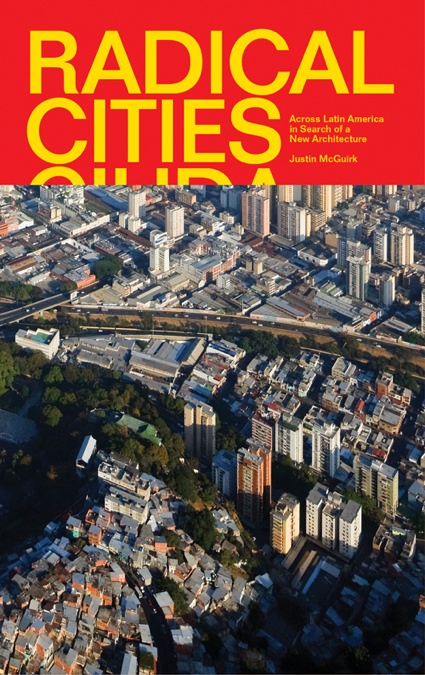
Publisher Verso Books writes: What makes the city of the future? How do you heal a divided city?
In Radical Cities, Justin McGuirk travels across Latin America in search of the activist architects, maverick politicians and alternative communities already answering these questions. From Brazil to Venezuela, and from Mexico to Argentina, McGuirk discovers the people and ideas shaping the way cities are evolving.
Ever since the mid twentieth century, when the dream of modernist utopia went to Latin America to die, the continent has been a testing ground for exciting new conceptions of the city. An architect in Chile has designed a form of social housing where only half of the house is built, allowing the owners to adapt the rest; Medellín, formerly the world’s murder capital, has been transformed with innovative public architecture; squatters in Caracas have taken over the forty-five-storey Torre David skyscraper; and Rio is on a mission to incorporate its favelas into the rest of the city.
Here, in the most urbanised continent on the planet, extreme cities have bred extreme conditions, from vast housing estates to sprawling slums. But after decades of social and political failure, a new generation has revitalised architecture and urban design in order to address persistent poverty and inequality. Together, these activists, pragmatists and social idealists are performing bold experiments that the rest of the world may learn from.
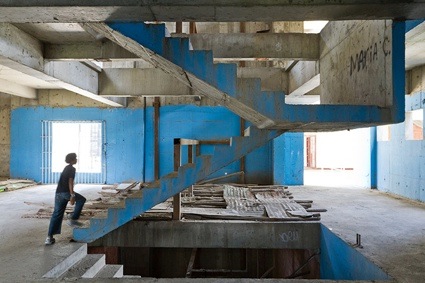 Torre David in Caracas. Photograph: Daniel Schwartz/U-TT & ETH
Torre David in Caracas. Photograph: Daniel Schwartz/U-TT & ETH
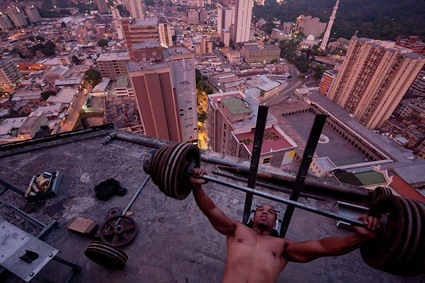 Torre David in Caracas. Photograph: Iwan Baan/WENN.com
Torre David in Caracas. Photograph: Iwan Baan/WENN.com
It’s mid July and this might already be my favourite book of the year 2014 (unless Jo Nesbo publishes a new one before December.) It is lively, daring, insightful and it might actually be one of the very few books about future cities that make sense to me.
While we (in Europe) are still proudly exhibiting in biennials 3D printed visions of what the city of tomorrow might look like, cities in South and Central America are already experiencing elements of our future urban conditions. Countries in Latin America have not only gone through mass urbanization long before China and Africa, they’ve also given rise to a new generation of architects who believe that architecture can be used as a tool for social change. These men (who are not only architects but also in some cases squatters and politicians) have had to respond to housing crisis, traffic congestion, segregation, lack of political participation and other effects of rapid unplanned urbanization.
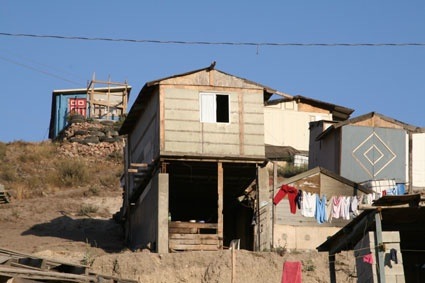 Teddy Cruz, Cross-Border Suburbia. Photo via ciutatsocasionals
Teddy Cruz, Cross-Border Suburbia. Photo via ciutatsocasionals
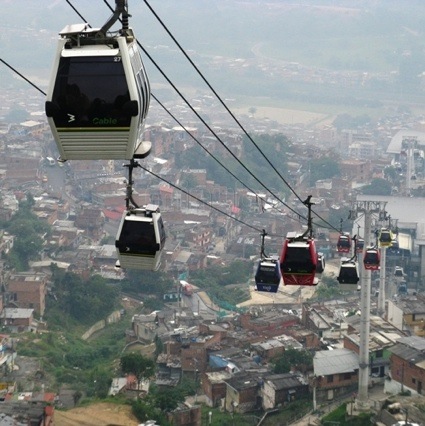 Photo: Metrocable Medellín. Source: Cities Programme webpage
Photo: Metrocable Medellín. Source: Cities Programme webpage
The urban experiments described in Radical Cities should teach European and North American urban planners and architects valuable lessons about conceiving and managing the mega cities of the future. Such as what happens when you value adaptability over perfect order, acknowledge the informal city as a vital part of the urban ecosystem, include the citizen into collective efforts of imagination and construction or embrace and work with the dynamic force that is precariousness.
Among the cases explored:
Alejandro Aravena created social housing for a poor community living in the north of Chile. He simply provided families with half a house and they built the rest, within a defined structural framework. The project was self-initiated and the final dwellers of the houses were involved in the design process.
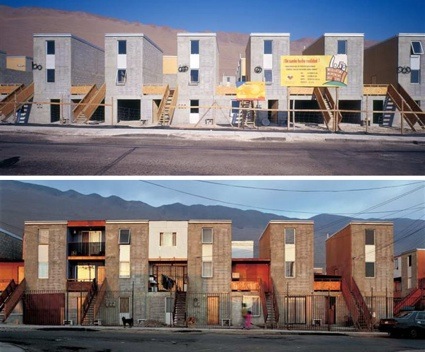 Elemental (Alejandro Aravena, Alfonso Montero, Tomás Cortese, Emilio de la Cerda), social housing in Iquique, Chile. Image Mindmap
Elemental (Alejandro Aravena, Alfonso Montero, Tomás Cortese, Emilio de la Cerda), social housing in Iquique, Chile. Image Mindmap
In Colombia, it’s a new radicalized political class that took the initiative of improving the quality of life of all urban dwellers. The movement started in the 1990s when Antanas Mockus, the mayor of Bogotá used tactics of performance artists to tackle violence and instil a new civic culture. He reduced road accidents by hiring mime artists to mock bad behaviour on the road and to direct traffic, he set up a scheme allowing people to exchange their guns for toys and he dressed as Superciudadano (SuperCitizen) to urge his fellow citizen to take care of their urban environment. The results of his unorthodox social experiments included homicide rate dropping by 70% and traffic fatalities by more than 50%.
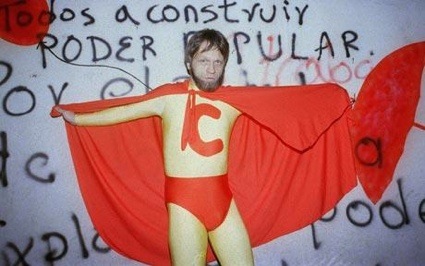 Antanas Mockus, mayor of Bogota, dressed as Superciudadano (Supercitizen)
Antanas Mockus, mayor of Bogota, dressed as Superciudadano (Supercitizen)
Torre David which the author calls ‘a pirate utopia’ is the third tallest skyscraper in Caracas. Built in the business district to host luxury offices, the building had stood empty for 13 years until 2007 when squatters moved in. Some 3000 people now live in “the tallest squat in the world.’ Inhabitants managed to organize a legitimate electricity distribution, they enjoy spectacular views over the city and live in apartments that range from the barely inhabitable to well furnished flats with all commodities. The building has developed its own community rules and even houses convenience stores and bodegas every two floors. On the other hand, there is no elevator so going to the top floor with the grocery can quickly turn into a fitness challenge. There are open facades and holes in the floor and accidents happen if you don’t stay away from the edge.
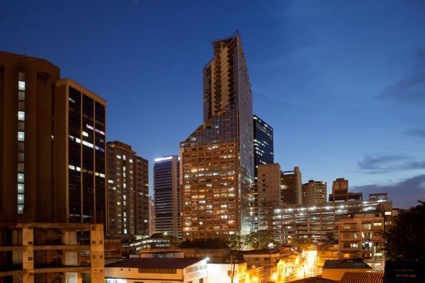 Torre David in Caracas. Photograph: Daniel Schwartz/U-TT & ETH
Torre David in Caracas. Photograph: Daniel Schwartz/U-TT & ETH
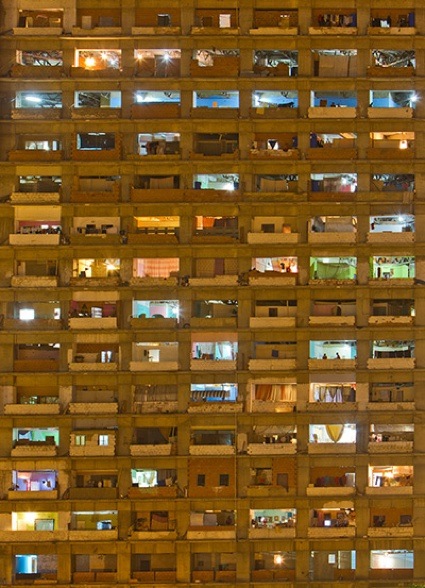 Torre David in Caracas. Photograph: Daniel Schwartz/U-TT & ETH
Torre David in Caracas. Photograph: Daniel Schwartz/U-TT & ETH
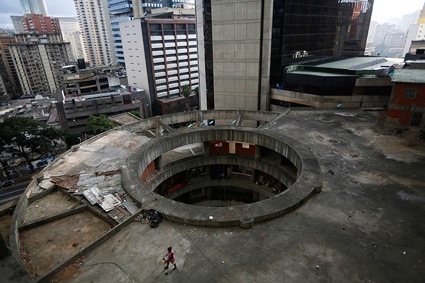 Torre David in Caracas. Photograph: Jorge Silva/Reuters
Torre David in Caracas. Photograph: Jorge Silva/Reuters
